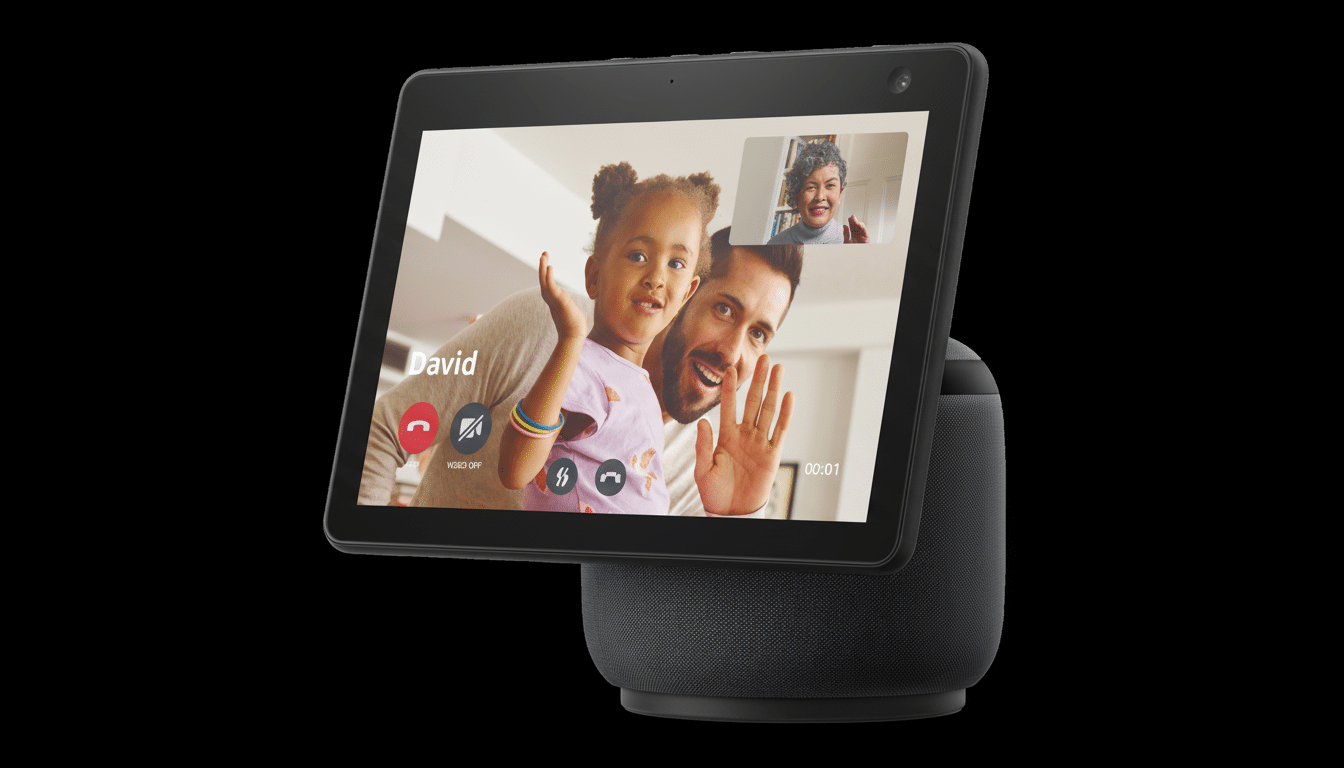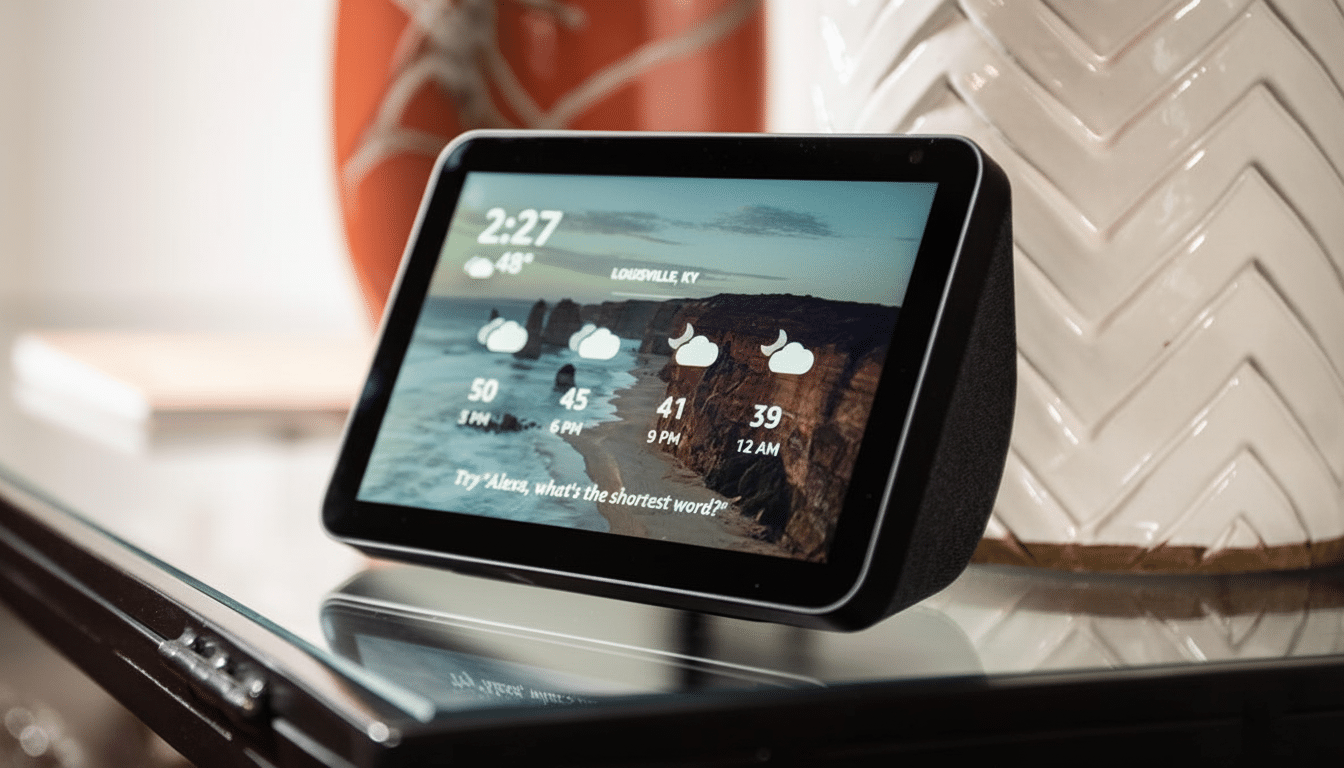Some owners of Amazon’s Echo Show smart displays say they experienced alarming data spikes, which appear to have been caused by a bug that forced the devices to repeatedly download a large amount of image data. Amazon says the problem has been resolved, but not before a few users watched their home networks chew through gigabytes of bandwidth without any obvious explanation.
How the data drain became apparent
The first high-profile one came from former Microsoft engineer Dave W. Plummer, who reported that two Echo Show devices on his network were using approximately 4GB of data during “a few hours” without him having any idea why. That’s an impressive figure for a device that typically only needs to drip data — places like weather, music controls and ambient screen visuals — in the background.

Online speculation went as far as the “always-listening” microphone and Amazon’s Sidewalk network. Neither theory withstands (much) scrutiny. Audio from Alexa wake-word requests is also processed locally until the wake word is detected, and the Sidewalk network is a low-bandwidth neighborhood mesh with a maximum monthly data cap of 500MB, according to Amazon’s published technical details.
Amazon’s explanation: a caching bug
Amazon told Tom’s Hardware that the mishap was caused by a caching issue where certain Echo Show devices were fetching hundreds of ultra–high–resolution images for screensavers and background artwork, instead of the much smaller files usually optimized for its displays.
Such backgrounds typically clock in between 1MB and 4MB and sized to cover the screens, which top out at 1080p for many of Echo Show models that use even lower resolutions.
The result can prove disastrous when a device repeatedly demands images that are much larger than it’s even able to display. For example, 20MB image refresh every minute could be a difference if we consider it for an hour total would be at least 1.2GB in an hour and some tens of gigabytes in a day. And if those assets are fetched over and over instead of being properly cached, the network request adds up for each use of an app.
Amazon has reported the bug as fixed, which sounds like a server-side and/or software fix that prevents the Echo Show from grabbing huge images for its display.
Users don’t need to do anything for the patch to be applied — though it’s always good practice to keep your gadgets updated and power-cycled in the wake of a fix being sent out.

Why it matters for consumers
Surprise data use is more than just an annoyance. Many internet plans have monthly caps or deliver charges for going over that can add up quickly. A single smart display pulling down the incorrect assets at a rapid clip could plausibly push a household over its plan’s limit, particularly with 4K streaming, game updates and cloud backups in the mix.
There is also the optics problem: when a voice-enabled device overnight begins to use significantly more bandwidth, users will “rightly” become concerned about privacy. In that case, the signs all suggest content delivery and caching mechanism, not audio uploads or snooping. But episodes like this undermine trust when vendors fail to diagnose and articulate clearly.
How to monitor and limit Echo Show data usage
If you have a router or an ISP app that offers per-device usage, scan for spikes associated with Echo Show models. Consumer routers tend to label it as “Amazon Technologies” or something like that; you can also find it by address in the Alexa app’s device settings.
On the device itself, consider trimming bandwidth-heavy features for now until you know that the fix has reached your unit. These options include limiting Photo Frame to a select personal album, time interval between background changes, autoplay for video snippets or motion effects on the Home screen. In Settings, check Home Content and Display settings to remove cards you don’t use.
If you’re feeling particularly paranoid, connect Echo Show to a guest network with usage monitoring turned on for a brief amount of time or create a data alert within your router, so that you would receive an alert if it starts sending or receiving data in an unusual way. Give it a day or two, and let’s see if usage is back down to something we can measure in 10s or 100s of megabytes, rather than several gigabytes.
The bigger smart home takeaway
This illustrates a low-grade but genuine danger of connected homes: background visuals, recommendations and art can be deceptively weighty if content delivery or caching go wrong. Vendors frequently cut corners, but even minor drawbacks can translate into large overall costs over millions of devices operating 24/7.
Amazon’s confirmation that the Echo Show bug was related to oversized image caching, and the fact it has now been fixed for when you daisy chain their devices together will be enough comfort for most owners right now though. It’s still a good reminder, though, to keep an eye on network analytics and know how much data your plan includes, and to occasionally audit smart display settings so the “smart” remains convenient, not costly.

